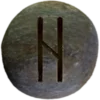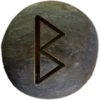Last Updated on May 24, 2025
Table of Contents


Walpurgis Night
Walpurgis (pronounced VAHL-poor-gis (Germanic) or VAL-pur-jis (English)) is also called Walpurgisnacht (VAHL-poor-gis-nahkt) or Hexennacht (HEK-sen-nahkt, “Witches’ Night”). It takes place on the night of April 30th. The date marks the halfway point between the spring equinox and the summer solstice. People light bonfires, sing, dance, and greet the summer. In many regions, they gather on hills or in forests. The fire clears away winter’s hold and welcomes fertility, light, and growth.
This night carries older meaning. Long before Christian saints and church bells, it held space for spirit work, renewal, and the turning of the year. Some sources link it to ancient observances of seasonal transition and rites of protection.
In German folklore, people believed witches flew to mountaintops on Walpurgis. The most famous site is the Brocken, also called Blocksberg, the highest peak in the Harz Mountains. Stories say witches met there to dance, conjure, and work powerful magic. Villagers rang bells or hung charms to guard against harmful spirits. ![]()
These customs often mix joy and fear. People throw straw figures or wreaths into the fire. These represent misfortune, cold, or disease. The fire devours them. Smoke rises. Sparks lift prayers and spells skyward.
Some wear masks or strange clothes to fool wandering spirits. Others leave out offerings—bread, milk, or ale for local land-wights or ancestral powers. The line between the seen and unseen thins. The dead draw near, and so do the wild ones of the wood.
Walpurgis asks for courage. One must greet change without turning away. In darkness, fire speaks clearly.
Fire and Folklore
Not all names for this night come from Germanic roots. In Sweden, it is called Valborgsmässoafton (VAHL-borgs-MESS-oh-ahf-ton), meaning “Valborg’s Mass Eve.” In Finland, it becomes Vappu (VAHP-poo). In these places, the holiday blends older traditions with later festivals.
Some link the name Walpurgis to Saint Walpurga, an 8th-century English missionary. Her feast day falls on May 1st. Over time, her name merged with pre-Christian rites in central and northern Europe.
Still, the fire rituals go back further. Ashes from the fires sometimes get scattered across fields. This act blesses the soil and calls for healthy crops. Farmers may walk the boundaries of their land with firebrands or torches. The fire drives off blight, rot, and bad luck.
In some areas, people leap over flames. This jump acts as a charm for luck, love, or strength. Others set up carved poles or may-trees the next morning. These signs mark the new season.
Though Walpurgis does not appear directly in the Poetic or Prose Edda, some themes overlap. The idea of fire as protection appears often. So does the belief that the veil between worlds opens at certain times.
Folk tales often carry the same tone. Spirits, both harmful and helpful, travel freely on this night. One must act with care and respect. Doors get locked. Children stay close. But the brave may go out and find vision, knowledge, or luck in the wild.
Walpurgis is not just a festival. It is a moment on the edge. Light pushes against dark, and the old year gives way. To take part is to accept the cycle: burn, clear, grow, return.
Runes Associated with Walpurgis
Two Elder Futhark runes often linked to Walpurgis are ᚺ (Hagalaz) and ᛇ (Eihwaz). ![]()
Hagalaz symbolizes disruption and natural force. Hailstorms, breaking patterns, and raw energy connect to this rune. During Walpurgis, Hagalaz reflects chaos before transformation. It marks the threshold between dark and light, winter and summer.
Eihwaz connects with the yew tree, death, and rebirth. It represents endurance and the unseen path. Eihwaz aligns with the spiritual crossing celebrated on Walpurgis night. It guards the soul as it faces the unknown.
These runes do not promise safety. They ask for inner strength. Hagalaz clears the way. Eihwaz shows the passage. Together, they shape the transition felt on Walpurgis. Fires burn. Shadows dance. Change begins.
Each rune challenges the seeker. Do not treat them as charms. Use them with care and intent. They do not whisper; they strike and call.
Its Importance in Asatru
Asatruar gather on Walpurgis night to mark the shift between seasons. They light fires to honor spirits, gods, and ancestors. These flames protect the living and guide the unseen.
Many hail Freyja and Odin during this time. Thor receives thanks for strength and safe passage through winter.
The veil thins. Some speak with the dead or listen for omens. Songs rise. Offerings fall into fire or earth.
Álfar and dísir receive praise. The land awakens.
Rituals focus on cleansing, luck, and renewal. Some leap flames or bless tools. Others meditate near trees.
Walpurgis helps Asatruar bond with kin, land, and lore. The night belongs to both spirit and soil. They greet summer not with ease, but with will.

